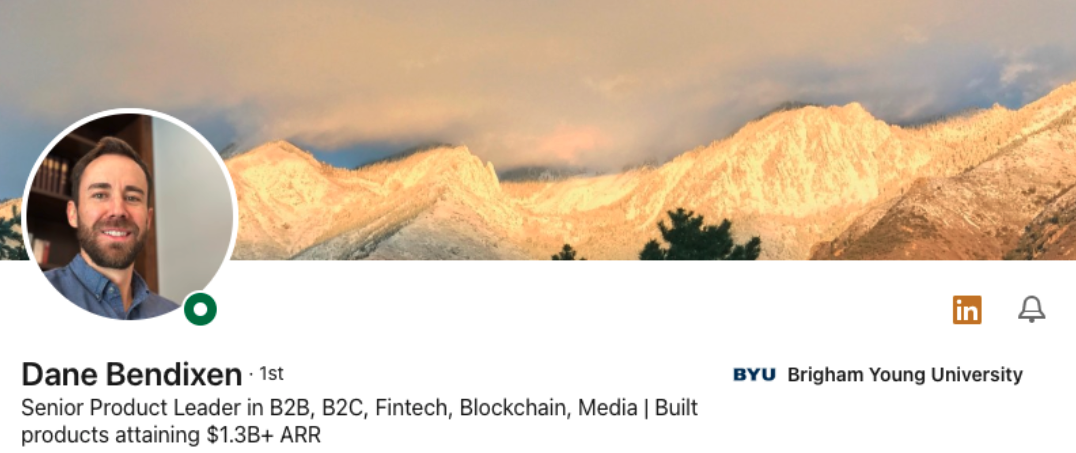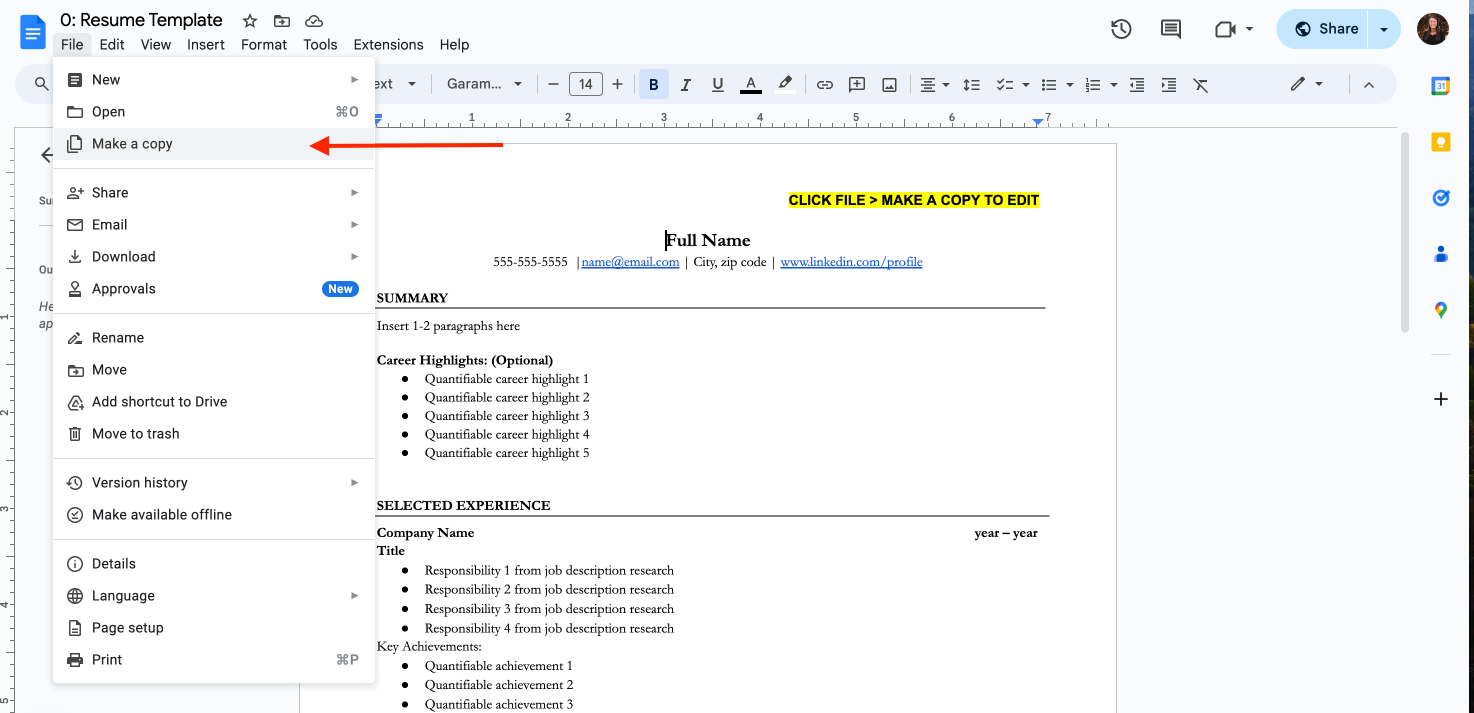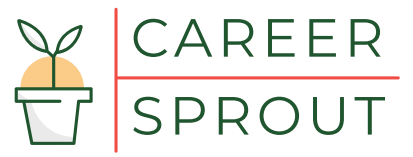With everything going on in the world right now… economy, lay offs, doom and gloom news…
We created this guide to help you through the most annoying part of the job search – the resume.
Now, I’m sure this guide will contradict the resume advice you’ve heard before.
But rest assured, this strategy has been responsible for 700+ people landing high paying job offers from companies they admire doing work that they actually love.
We hope it helps you do the same 🙂
Step 1: Get clear on the ONE role you want to land
“The man who chases 2 rabbits catches none.” – Confucius
We never chase 2 positions at the same time. It’s not only stressful, it also dramatically reduces your odds of landing a job.
Because Hiring Managers don’t want to speak to people who aren’t a fit for THEIR role.
Especially in today’s market.
Hiring managers prefer someone who is a specialist rather than a generalist.
Tip: Stick with one skillset (don’t go for a CSM role while also going for a PM role, too). The ONLY time you can go after two different roles is if/when there is an overlap between the two roles. For example Project and Program Management. But you cannot apply for Project and Customer Success roles at the same time.
Resource: If you’re unclear about how to identify the ONE role that you should be going after, you can watch this video to learn the 3 frameworks to land high paying jobs.
Step 2: Study 15 to 25 job descriptions of this role
“The man who does not read has no advantage over the one who cannot read.” – Mark Twain
Job boards (and LinkedIn) rank resumes based on keywords. And each position has specific keywords recruiters and hiring managers search for.
The more keywords you have, the higher you’ll rank.
So study job descriptions to find the most important keywords. And here’s a secret: Most recruiters and hiring managers don’t scroll past the 1st page…
It’s VITAL that your resume shows up on page 1.
Tip: Start your list by pretending you’re a hiring manager, search for “POSITION job description template”
Resources: CareerSprout Job Description Library
Step 3: Write your resume using keywords from Step 2
Once you’ve listed the major keywords repeated across multiple job descriptions… It’s time to write the perfect resume that gets recruiters + hiring managers reaching out to YOU.
Bonus: Don’t want to write your own resume? Apply for our next cohort here
Resource: Here’s a step by step video training
Step 4: Revise your LinkedIn profile to mirror your resume
Recruiters/Hiring Managers IMMEDIATELY check your LinkedIn once they get your resume. So it’s important to have a strong header + professional picture and make sure the rest of your LinkedIn profile is copied and pasted from your resume.
LinkedIn Header Examples:
- Senior Product Leader in B2B, B2C, Fintech, Blockchain, Media | Built products attaining $1.3B+ ARR
- Sr. Mgr, Program Management | enabling strategic product launches through cross functional partnerships and program leadership
- Senior Program Manager with a proven track record managing cross-functional SaaS teams/Management of strategic and technical programs.
- Project Manager | 7+ years of experience managing complex projects from inception to launch | 94% of projects delivered ahead of schedule and under budget
- Experience leading customer service teams, managing 13.8M+ in ARR, and maintaining a 97% renewal rate.
- Head of Customer Success l People Leader l 10+ Years of Experience
- Strategic Communications Professional | Crafting Compelling Stories to Drive Brand Awareness & Engagement
- Product Marketing Leader

Jump to 26 minute mark for step by step instructions
Step 5: Post your resumes to job boards
There are a ton of great job boards out there, and they’re often the quickest and easiest way to get in front of recruiters.
Of course, you’ll only get exposure if you’re keyword optimized.
Please post your resume to as many job boards as you can, as each one increases your exposure to Hiring Managers and Recruiters.
Tip: Job boards work like the MLS, so check out these pro tips to stay ranked
Tip: There are new job boards coming out all the time. So Google the best job boards and industry specific job boards (e.g., Best Product Manager Job Boards)
Resources: Our favorite job boards to start with: BuiltIn | Angel.co | Levels.fyi | Indeed | ZipRecruiter
Resume Mythbusting
Myth: Your resume has to be 1 page.
If you have <5 years of experience, then keep it 1 page.
If you have 5+ years of experience, then 2 pages is fine (3 pages MAX).
Myth: Resumes have ALL your work history.
Only relevant experience should be on your resume.
And you should not have details beyond the last 10-15+ years.
Myth: Make a new resume for every application.
Always study the job description of before you apply.
Make sure you’re not missing any glaringly obvious keywords, phrases, or experience.
But you should be targeting ONE role, so one resume works just fine:)
Myth: A great resume will get you the job…
NOT AT ALL.
It’s the words that come out of your mouth that get you the job.
Your resume is just ONE way to open the door for interviews.
Myth: It’s okay to have one or two grammatical errors.
Unfortunately, no.
Have 1-2 people (or chatGPT) proofread your resume before you save it as a pdf.
Resume Format
Our coaching clients always create a text-only format of their resume.
This format should be a text only pdf version of your resume that you can upload to job boards and send to recruiters.
We want the format to be easy for a system (aka a machine) to identify keywords in your resume.
Resume Disclaimer
NOTE: The resume is the #1 area most people get stuck or have a hard time with. So I want to stress something here:
Use the steps, templates/examples we share here to help you build yours, but don’t let yourself stay on this step for too long.
Your resume is not what is going to get you the job.
It’s the words that come out of your mouth (during exploratory calls and interviews) that will get you the job.
Even if you don’t have the absolute best resume in the world, using the strategies above will still allow you to stand apart from the majority of job seekers.
And if you need any help along the way, you can
– join our free coaching sessions on LinkedIn every Wednesday at 10am PT / 1pm ET or
– apply for our next coaching cohort
Resume Templates:
Now it’s time to put it all together 🤓
First, choose your template:
- Blank Resume Template
- Customer Success Template
- Project/Program Manager Template
- Product Manager Template
Next, make a copy of the Google Doc so you can edit it using the examples listed below:

Whenever you're ready, there are 4 ways we can help:
1. CareerSprout Academy Join 700+ tech professionals in our flagship coaching program. Our coaching cohorts are designed to help you land $200k to $500k+ job offers that align with your values and life goals.
2. Free Coaching Calls Join us live on LinkedIn every Wednesday at 10am PT / 1pm ET to ask questions live and get actionable insights to land a job in today's market and build a meaningful career.
3. Weekly Newsletter Get resources with actionable insights delivered to your inbox each week to help you navigate personal and professional growth in today's world.
4. Partner with CareerSprout Want Gaurav or Katie to speak at your next event or host a virtual workshop? We'll create a workshop with actionable advice and strategies for job seekers in your community.
